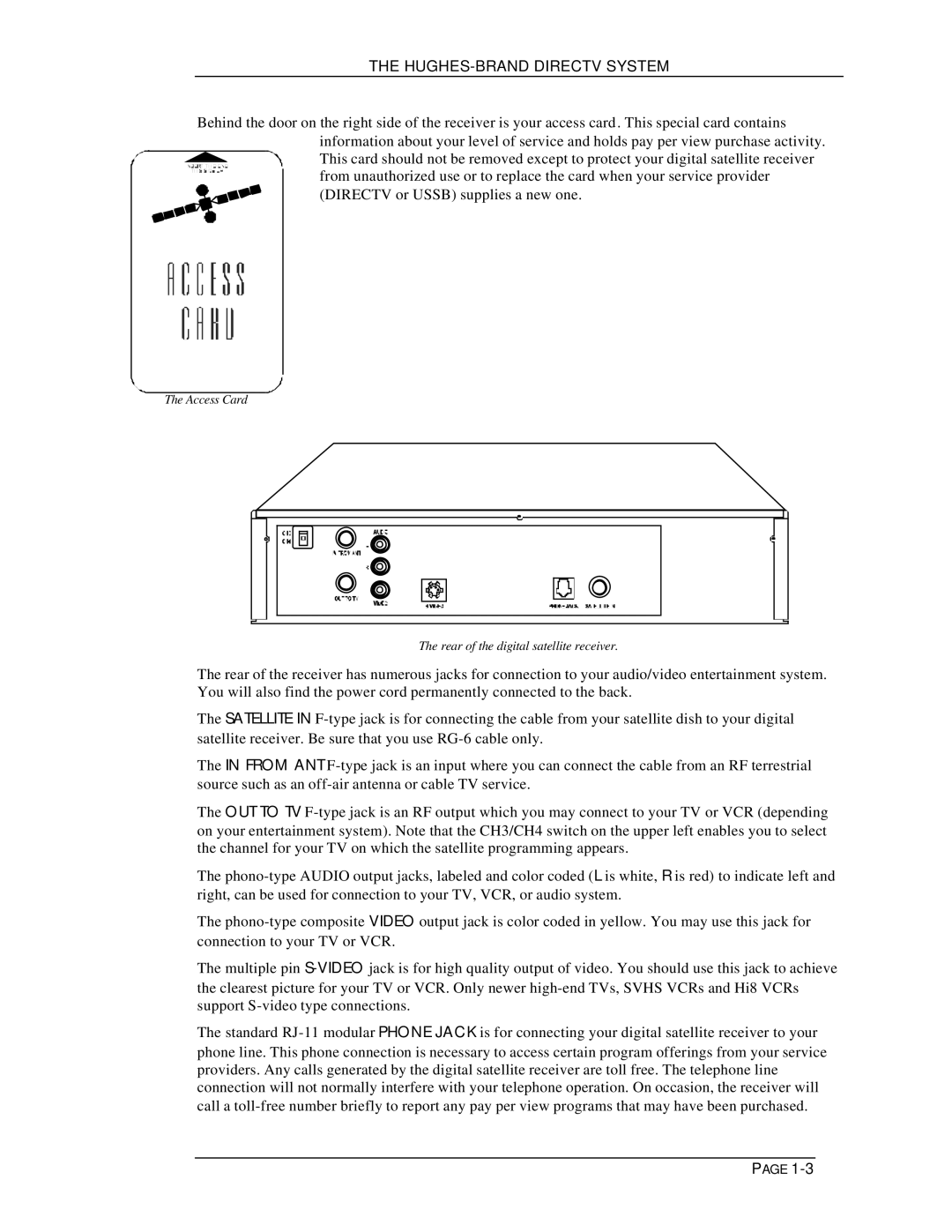THE HUGHES-BRAND DIRECTV SYSTEM
Behind the door on the right side of the receiver is your access card . This special card contains information about your level of service and holds pay per view purchase activity.
This card should not be removed except to protect your digital satellite receiver
from unauthorized use or to replace the card when your service provider (DIRECTV or USSB) supplies a new one.
The Access Card
The rear of the digital satellite receiver.
The rear of the receiver has numerous jacks for connection to your audio/video entertainment system. You will also find the power cord permanently connected to the back.
The SATELLITE IN F-type jack is for connecting the cable from your satellite dish to your digital satellite receiver. Be sure that you use RG-6 cable only.
The IN FROM ANT F-type jack is an input where you can connect the cable from an RF terrestrial source such as an off-air antenna or cable TV service.
The OUT TO TV F-type jack is an RF output which you may connect to your TV or VCR (depending on your entertainment system). Note that the CH3/CH4 switch on the upper left enables you to select the channel for your TV on which the satellite programming appears.
The phono-type AUDIO output jacks, labeled and color coded (L is white, R is red) to indicate left and right, can be used for connection to your TV, VCR, or audio system.
The phono-type composite VIDEO output jack is color coded in yellow. You may use this jack for connection to your TV or VCR.
The multiple pin S-VIDEOjack is for high quality output of video. You should use this jack to achieve the clearest picture for your TV or VCR. Only newer high-end TVs, SVHS VCRs and Hi8 VCRs support S-video type connections.
The standard RJ-11 modular PHONE JACK is for connecting your digital satellite receiver to your phone line. This phone connection is necessary to access certain program offerings from your service providers. Any calls generated by the digital satellite receiver are toll free. The telephone line connection will not normally interfere with your telephone operation. On occasion, the receiver will call a toll-free number briefly to report any pay per view programs that may have been purchased.

